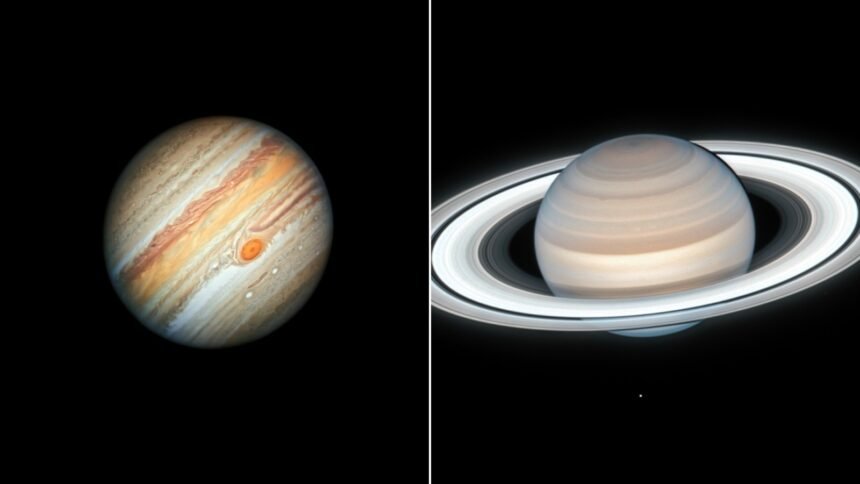Just in time for Christmas, Jupiter and Saturn will come closer than they have since the Middle Ages

The two largest planets in our solar system are coming closer together than they have been since the Middle Ages, and it’s happening just in time for Christmas.
So, there are some things to look forward to in the final month of 2020.
On the night of December 21, the winter solstice, Jupiter and Saturn will appear so closely aligned in our sky that they will look like a double planet. This close approach is called a conjunction.
“Alignments between these two planets are rather rare, occurring once every 20 years or so, but this conjunction is exceptionally rare because of how close the planets will appear to one another,” said Rice University astronomer and professor of physics and astronomy Patrick Hartigan in a statement.
“You’d have to go all the way back to just before dawn on March 4, 1226, to see a closer alignment between these objects visible in the night sky.”
If you’re a stargazer, you’ve likely noticed Jupiter and Saturn have been getting closer together since the summer. And they’re currently visible in our night sky, inching ever closer to one another.
But between December 16 and 25, they will become even cozier. Look for the Jupiter-Saturn conjunction low in the western sky for about an hour after sunset each evening during this time.
“On the evening of closest approach on Dec(ember) 21 they will look like a double planet, separated by only 1/5th the diameter of the full Moon,” Hartigan said. “For most telescope viewers, each planet and several of their largest moons will be visible in the same field of view that evening.”
While these two planets may appear close, they are still hundreds of millions of miles apart, according to NASA.
Hope for clear skies because the conjunction will be visible around the world, with the best perspective for those near the equator.
“The further north a viewer is, the less time they’ll have to catch a glimpse of the conjunction before the planets sink below the horizon,” Hartigan said.
The planets will be bright enough to be viewed in twilight, which may be the best time for many US viewers to observe the conjunction.
“By the time skies are fully dark in Houston, for example, the conjunction will be just 9 degrees above the horizon,” Hartigan said. “Viewing that would be manageable if the weather cooperates and you have an unobstructed view to the southwest.”
If you’re in New York or London, or along those latitudes, try to spot the conjunction right after sunset. Waiting an hour after the sun sets will only put the planets closer to the horizon, making them more difficult to spot.
The best conditions to see this astronomical event will include a clear southwestern horizon and no low clouds in the distance, Hartigan said. Binoculars or a telescope may help you distinguish the planets. A telescope would enable a view of Saturn’s rings and the brightest moons of both planets, he said.
If you miss this conjunction and want to see the planets with the same proximity, just higher in the sky, it won’t happen until March 15, 2080 — and then not again until after 2400.
Between 0 and 3000 CE, or Common Era, only seven conjunction were or will be closer than this one — and two of those were too close to the sun to be seen without a telescope, according to Hartigan. So, yes, this is an incredibly rare event.
